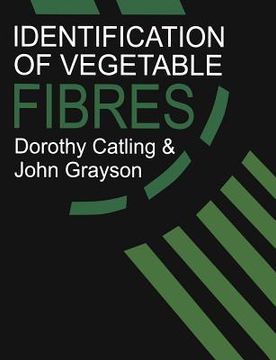Compartir
Identification of Vegetable Fibres (en Inglés)
D. Catling
(Autor)
·
Springer
· Tapa Blanda
Identification of Vegetable Fibres (en Inglés) - Catling, D.
S/ 269,35
S/ 538,69
Ahorras: S/ 269,35
Elige la lista en la que quieres agregar tu producto o crea una nueva lista
✓ Producto agregado correctamente a la lista de deseos.
Ir a Mis Listas
Origen: Estados Unidos
(Costos de importación incluídos en el precio)
Se enviará desde nuestra bodega entre el
Lunes 17 de Junio y el
Lunes 01 de Julio.
Lo recibirás en cualquier lugar de Perú entre 2 y 5 días hábiles luego del envío.
Reseña del libro "Identification of Vegetable Fibres (en Inglés)"
It is often possible to identify fragments of plants by studying their microscopical characteristics. The recognition of a single feature very rarely establishes the plant's identity; more often, it is necessary to recognize a unique combination of characteris- tics. For plant identification, the most valuable characteristics are those least likely to be affected by changes in environment; if the feature is uncommon as well as stable, it is even more useful. Good descriptions of the anatomy of plants are invaluable. For example, The Identifi- cation of Hardwoods (Brazier and Franklin, 1961), together with its punched card key, is an excellent book which is useful in practice. Characters describing the sc1erenchyma account for only three places in this key. Using only these characters, it would be impossible to identify a timber. Is it possible then, to identify a species given only sc1erenchyma in the form of a commercial fibre? If it is possible, it is not easy. Although, for many purposes, plant fibres are being replaced by man-made fibres, vegetable fibres are still used, particularly in sacking and cordage and in some indus- trial materials. Articles which must be examined in a forensic science laboratory are not always of recent manufacture and archaeologists and historians are interested in older materials. Therefore, it is still necessary for many workers to identify the plant species from which fibres have been extracted.
- 0% (0)
- 0% (0)
- 0% (0)
- 0% (0)
- 0% (0)
Todos los libros de nuestro catálogo son Originales.
El libro está escrito en Inglés.
La encuadernación de esta edición es Tapa Blanda.
✓ Producto agregado correctamente al carro, Ir a Pagar.

